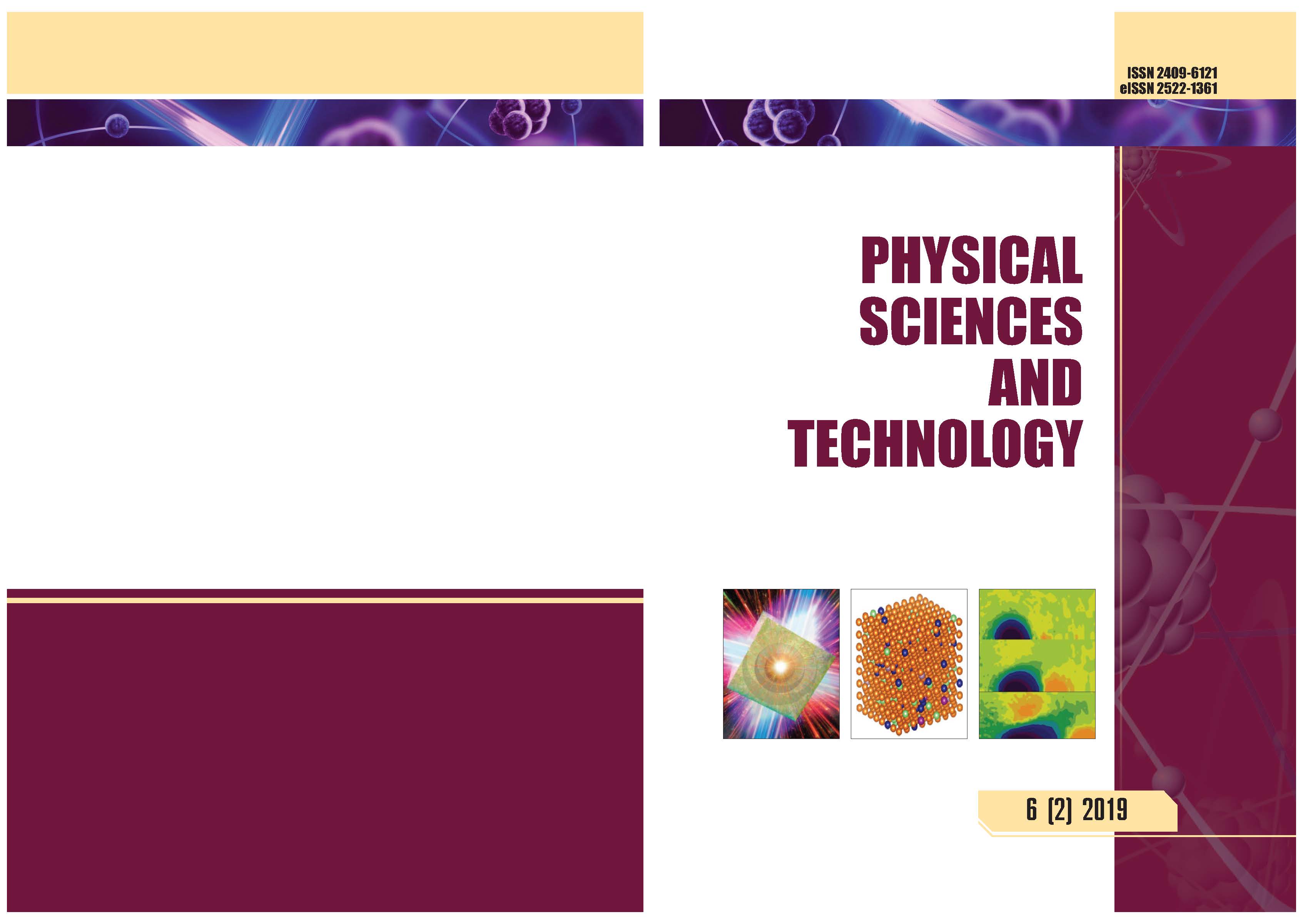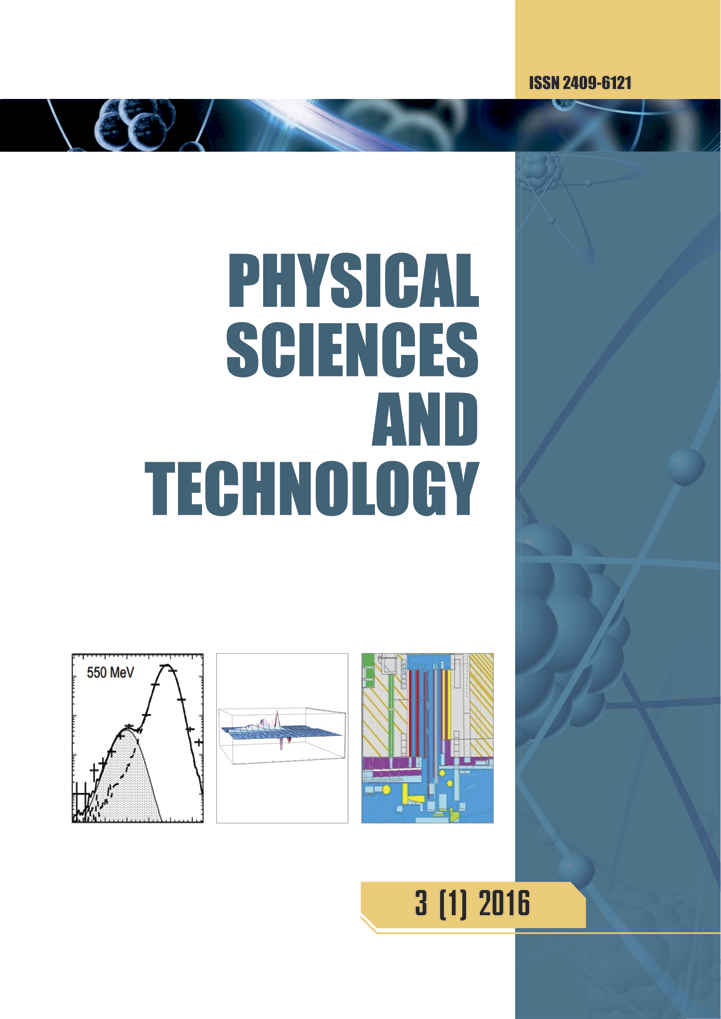Influence of Cu impurities and surface temperature to the formation of thin a-C:H(Me) film
DOI:
https://doi.org/10.26577/phst-2019-2-p9Abstract
The aim of this experimental work is identify most important physical and chemical processes on the surface during amorphous carbon films formation on the silicon surface with copper nanoclusters (Cu). Duration of films deposition on n type silicon (100) surface by using different substrate temperatures (25 °C, 100 oC and 250 °C) was 45s. Velocity of film growth from C2H2 gas plasma depended on surface temperature and was variable (0.2-0.5 nm/s). Data of null ellipsometry, Raman spectroscopy and element analysis showed that formation of amorphous carbon film is in the early stage and mixture of Si-C, Si-COH and GLC fragments is dominant on the surface. The experimental RS curves were fitted by few Gaussian-shape lines in the spectral range from 500 cm-1 to 700 cm-1, from 700 cm-1 to 900 cm-1, from 900 cm-1 to 1100 cm-1 and from 1100 cm-1 to 1900 cm-1 and analysis of the additional peaks in all ranges confirmed complexes of different carbons structures in the film. Carbon films with more ordered C-C bonds grows during film formation at higher temperatures (>100o C) on the silicon surface with Cu particles, because atoms of copper penetrate into the deeper layers of silicon. The substrate temperature influenced the surface amorphisation because of active oxygen and hydrogen diffusion into deeper layers and formation of hydrogenated silicon carbon with fragments of amorphous carbon films becomes not significant.





